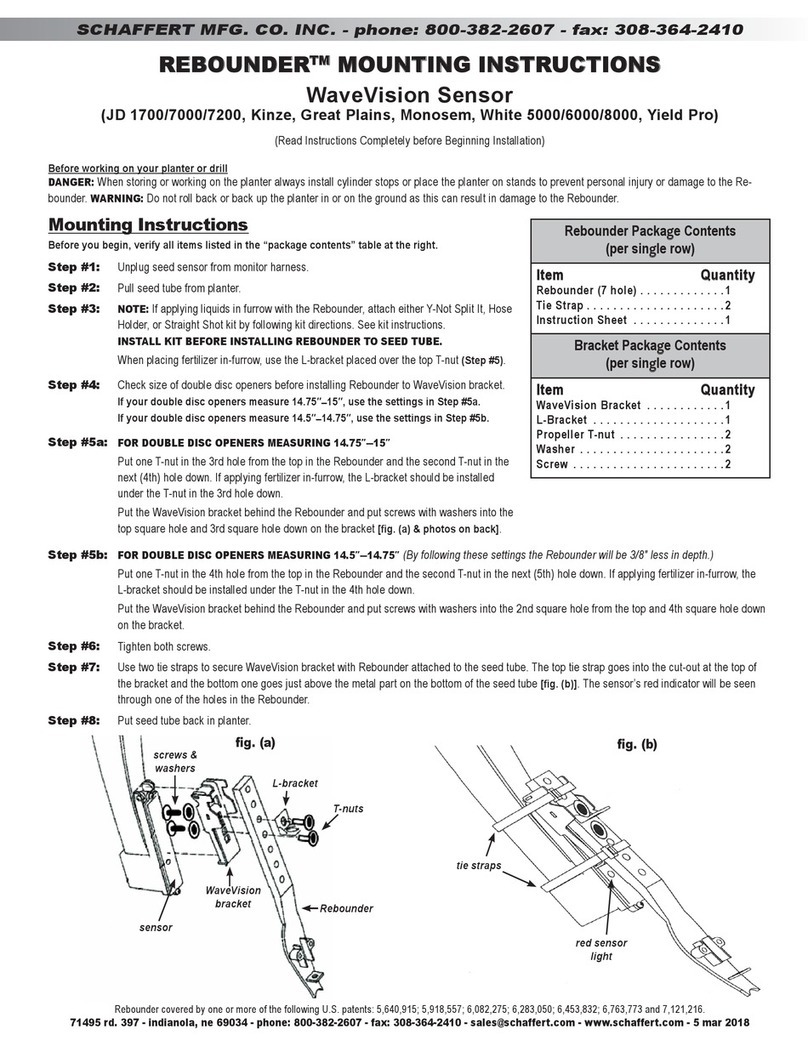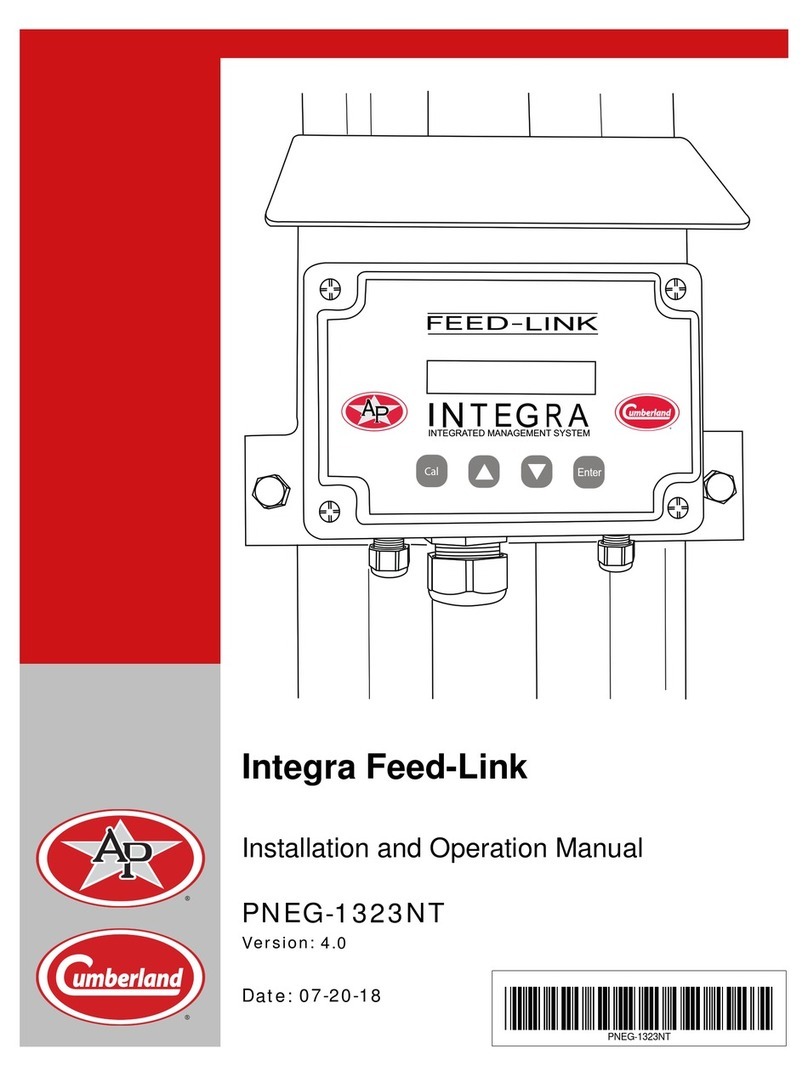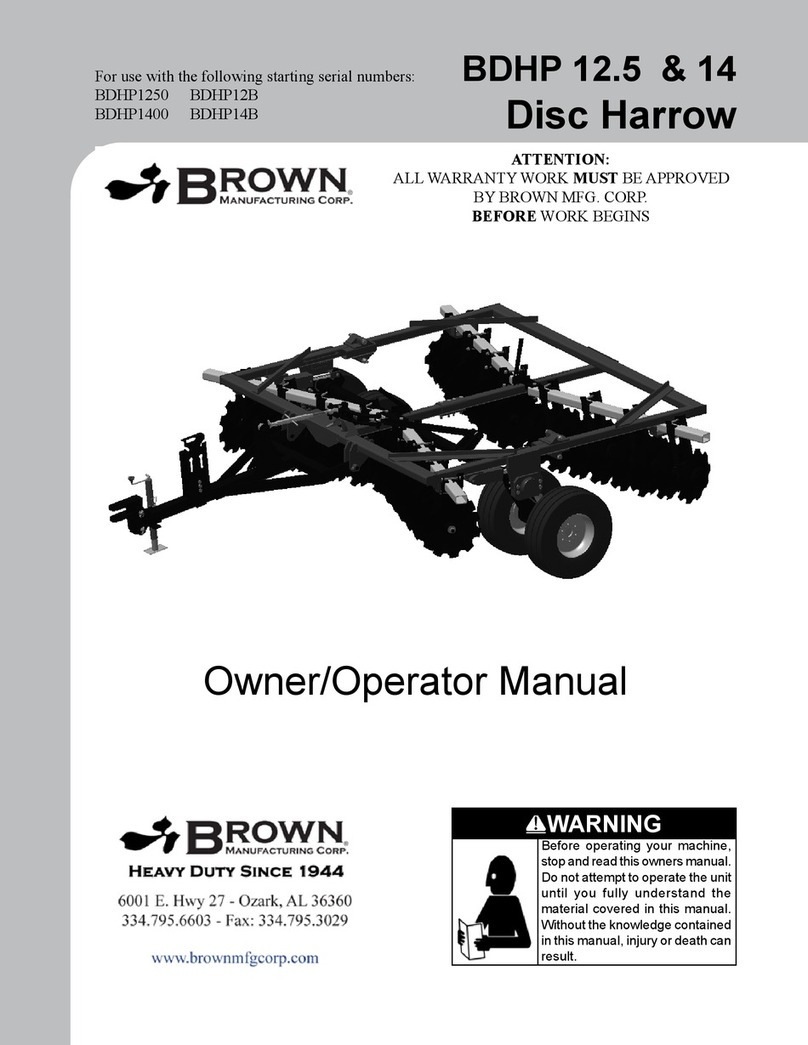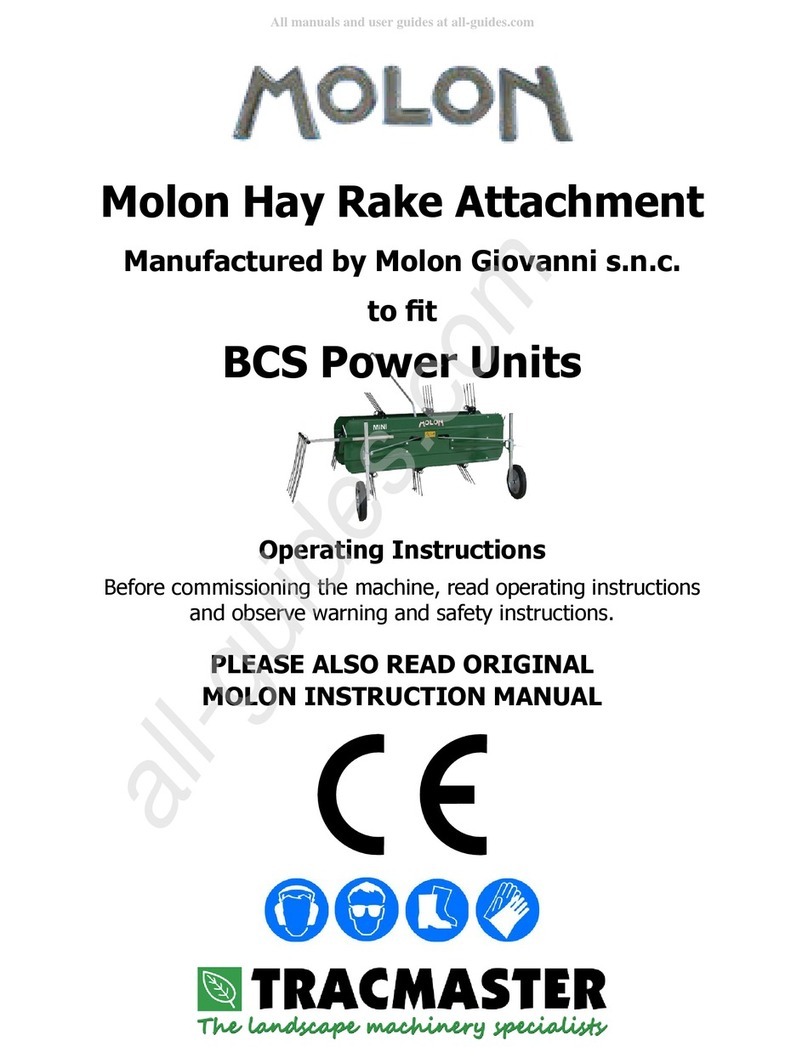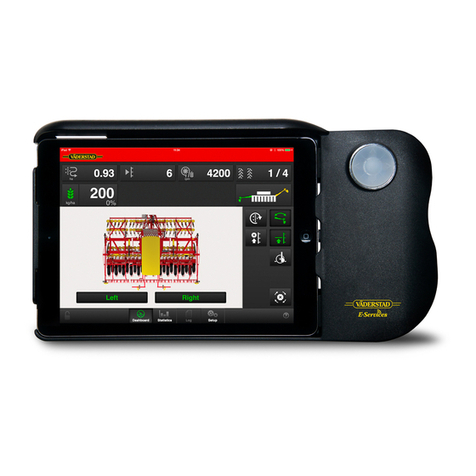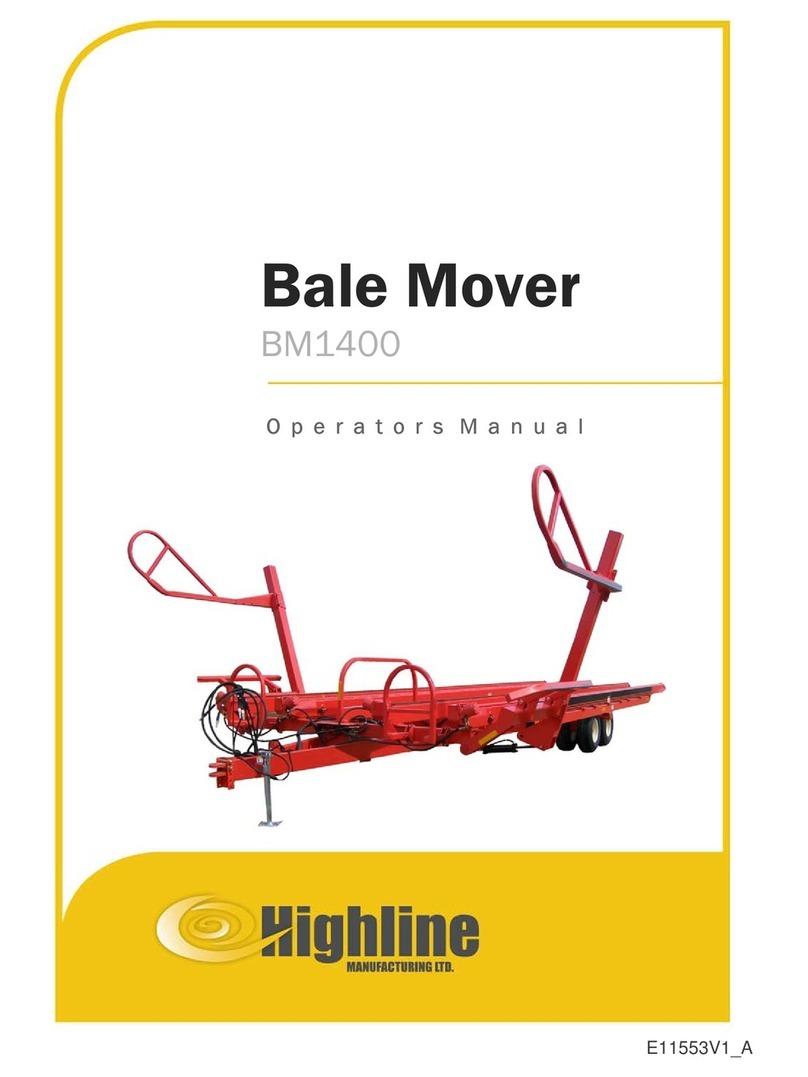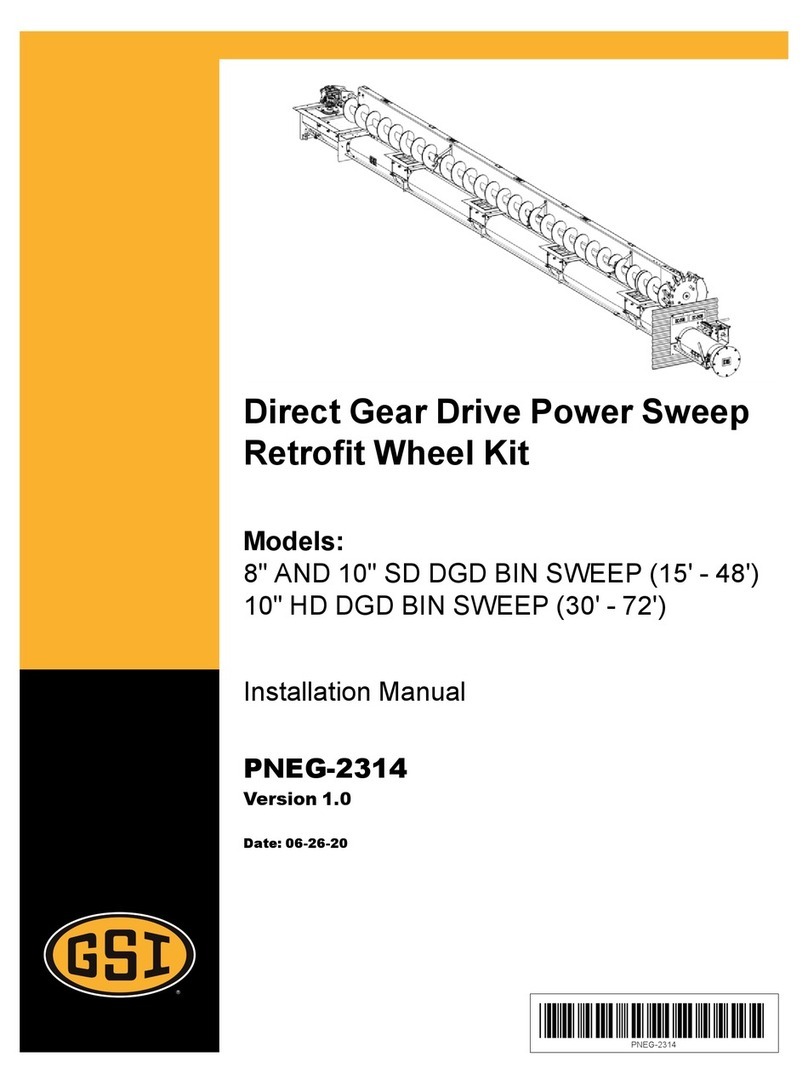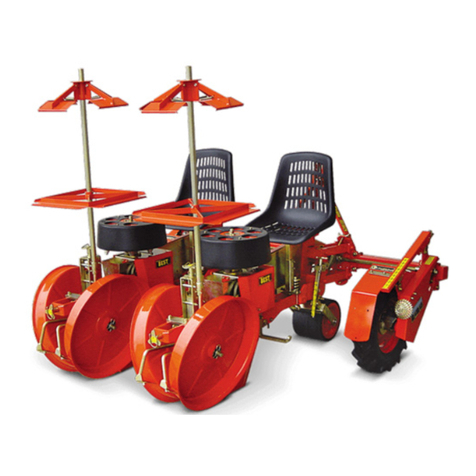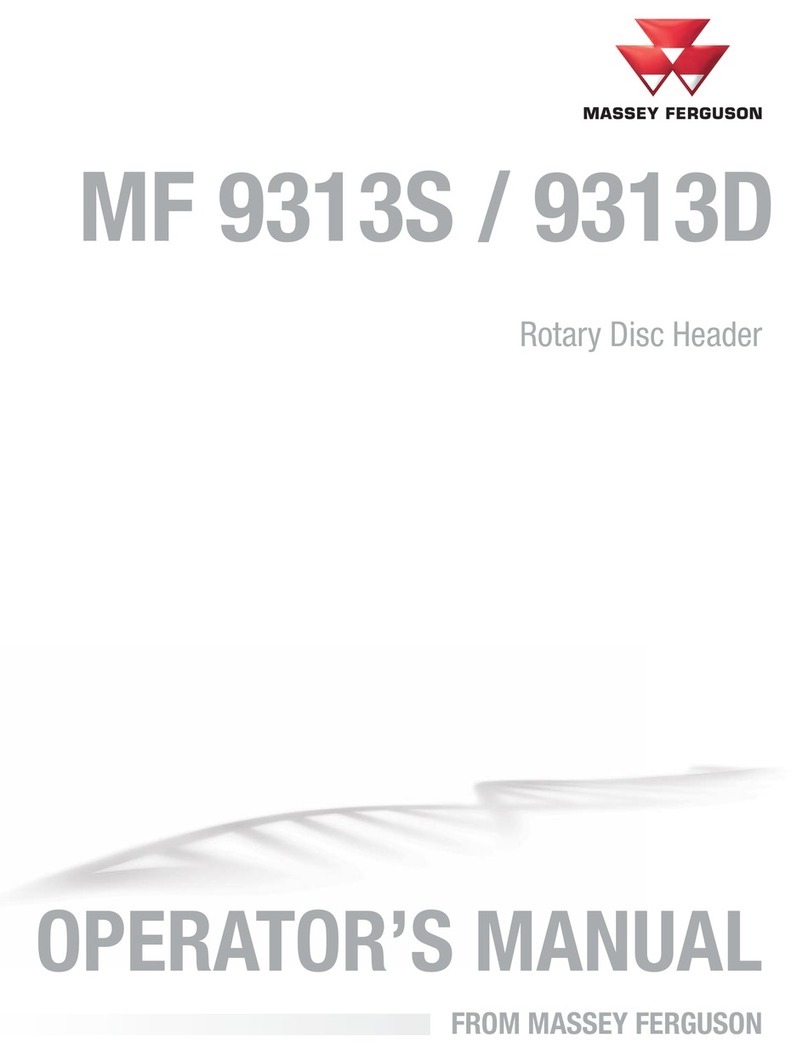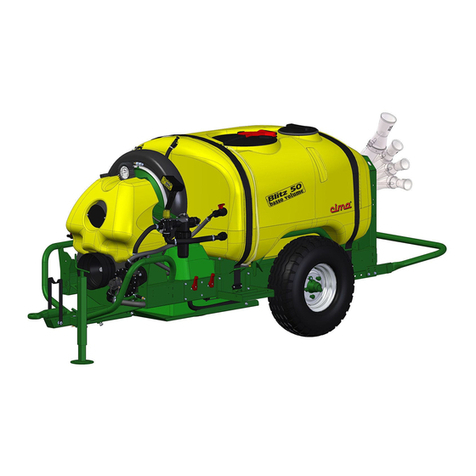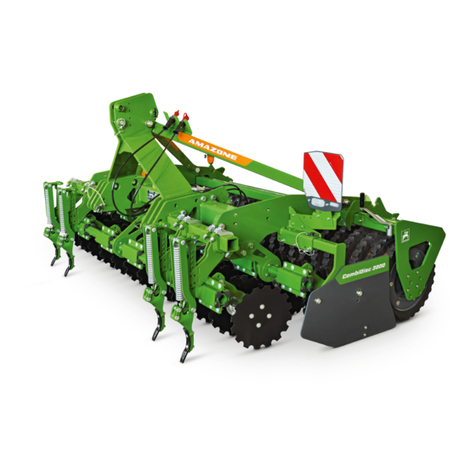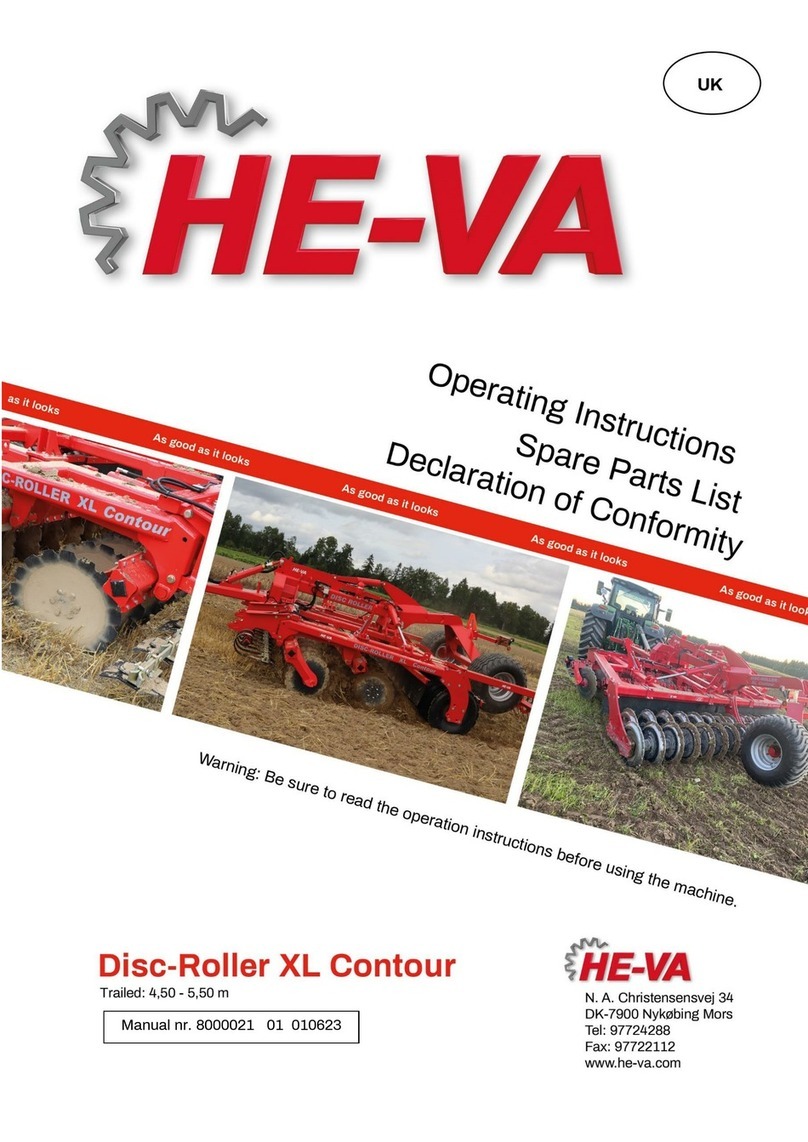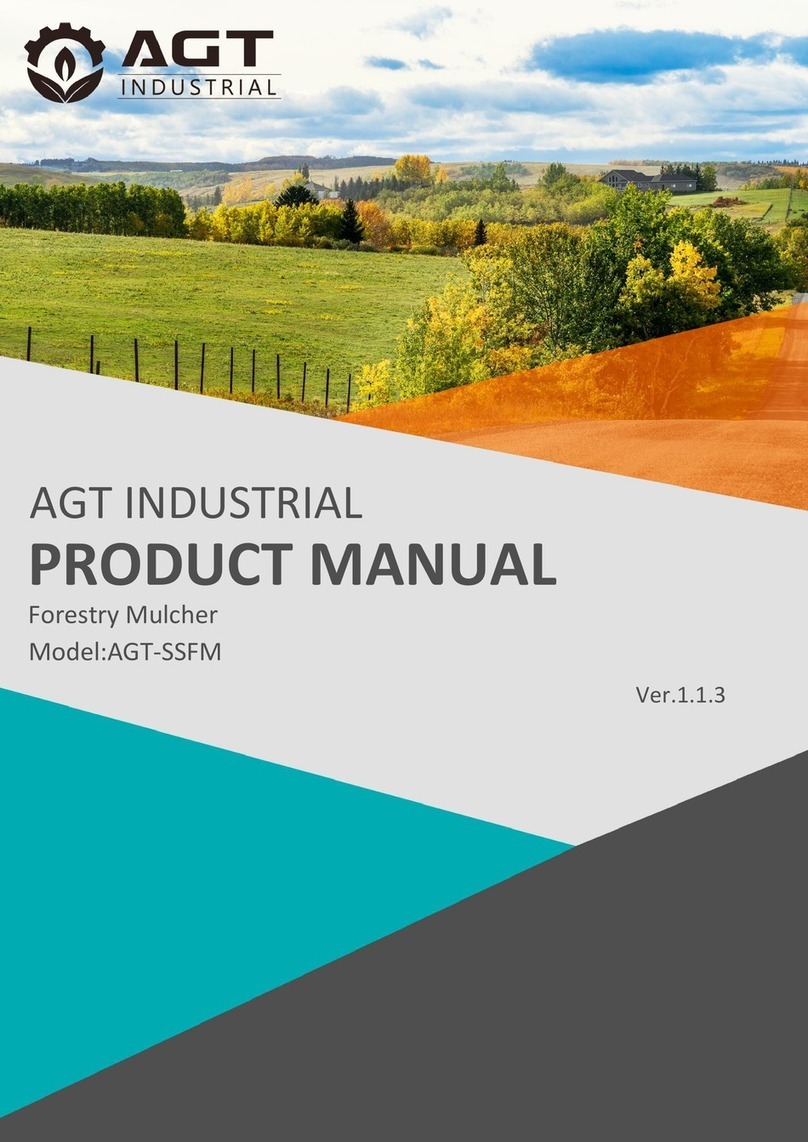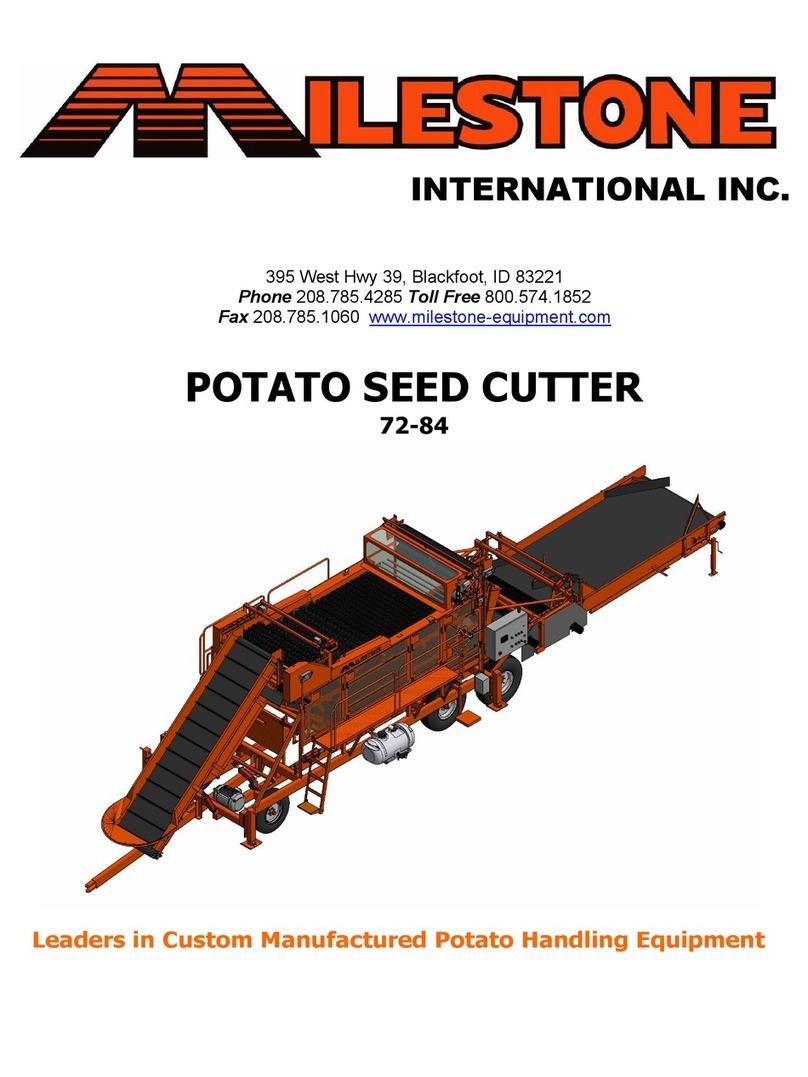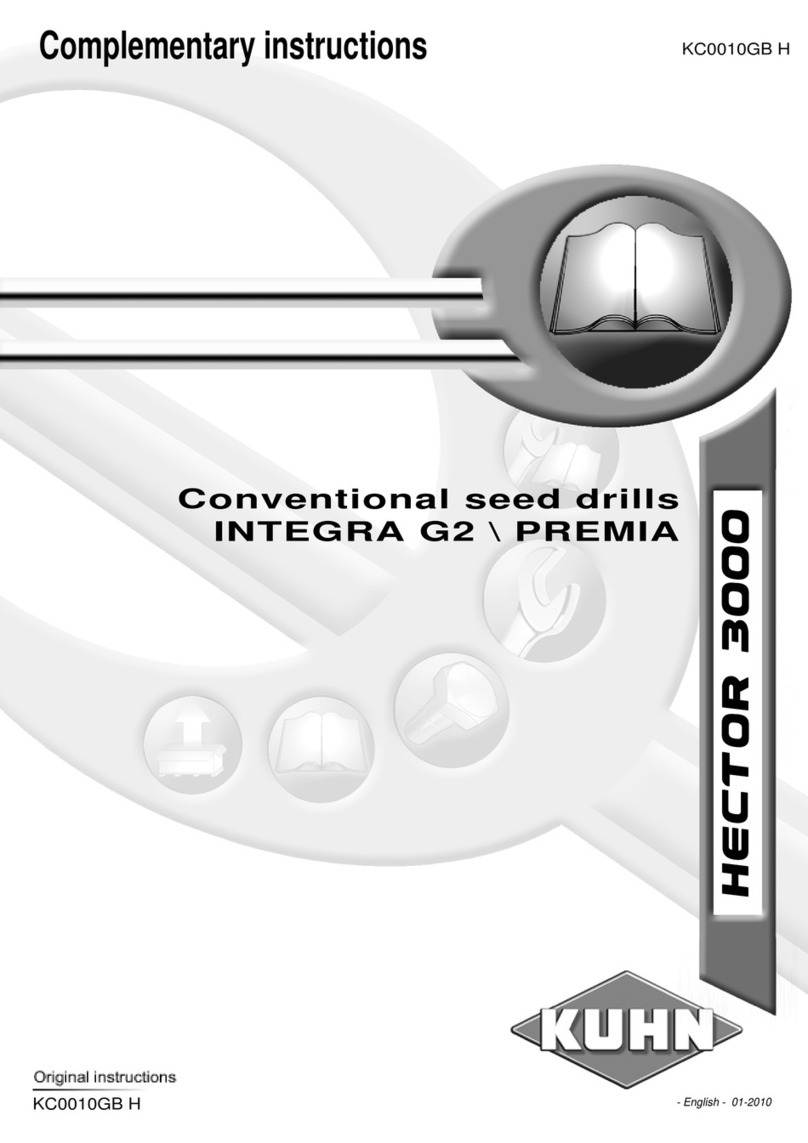
Check the machine before each launch. Start work only if the machine is in perfect conditions.
Before using the machine, make sure that all security devices are located properly in place and in good
conditions; if damage or failure in the protections is found, replace them immediately.
During the work, ensure there are no people or animals in the described range on the label.
When working in public places, is ABSOLUTELY MANDATORY to clear people away and increase caution.
Whoever approaches to the machine is in a danger zone and thus becomes an "EXPOSED PERSON".
The operator has to prevent everybody from entering the danger zone and operate tne machine
with utmost caution. If somebody comes close, the operator must stop the tractor engine immediately.
The machine should not be left unattended when in motion.
Always keep the machine in good working conditions and make maintenance regularly.
SECTION 3: TRANSPORT AND HANDLING
CAUTION!
If the machine, hitched to the tractor, must circulate on the public roads, you must comply with
the Highway Code regulations in force in the country in which the machine itself is used.
Along with respect for the rules, when running on public roads, particular attention must
be given to the choice of an appropriate speed rate, especially if the road is declining.
In case that the machine hides, the rear signal lights of the tow vehicle, use a repetitive rear display panel.
Entering the road after work, you must pay attention to cleaning of tires and working parts, to avoid
littering the road with dirt or other materials.
During road use, the flashing orange/yellow device mounted on the tractor must be
always on, even during daytime.
During transportation, with the machine raised, ensure that the front elevator control
Is blocked, to prevent accidental lowering of the machine.
The machine must be raised at least 40cm from the ground for road transport.
If the machine must be transported over a long distance, it can be loaded on a truck.. In this case,
consult «Machine dimensions»for the weight and dimensions. This will allow you to make sure that
the machine can pass without difficulty.
To lift the machine from the ground to the loading platform, hook up the machine from the relative lifting
points indicated on the machine.
Loading with a crane: make sure that the carrying capacity of the crane is fit to lift the weight of the machine.
The hitching points for lifting are clearly visible and are marked by stickers. In case you do not have
stickers in your machine, you must load it with the associated pallet. Lift the machine with the utmost care
and move it slowly without jolting on to the truck or railway car.
DANGER! When lifting or transporting, use the greatest care: have all persons not directly involved in the lifting
operations move well clear of the lifting area. Clear the zone to which the machine is to be transferred.
Make sure that the available lifting means are fit for the purpose. Do not touch hanging loads
and always keep at a safety distance from them. When transported, the loads must not be lifted
more than 20 cm from the ground. Make sure that the zone in which the operations take place
has a sufficient «escape route», i.e. a clear and safe zone to which the operators can quickly move if
the load should fall.
Once the machine has been moved on to the truck or wagon, make sure that it remains blocked in position.
Fix the machine firmly to the surface on which it rests by means of the pre-engineered points marked with
the «hook»decal, using well tightened ropes or chains suited to its weight and able to prevent it from
moving in anyway.
After having transported the machine to the desired site and before removing the elements that hold it in
place, make sure that its position is unable to be of danger.
Now remove the ropes and unload the machine from the means of transport in the same way as it was loaded
